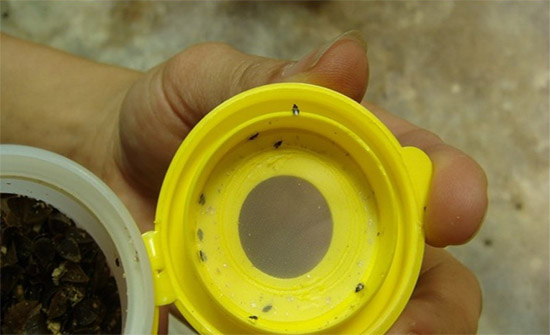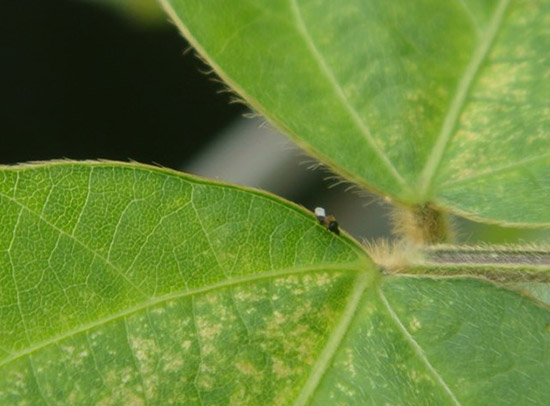Issue 16, September 26, 2018
Minute Pirate Bug
Minute pirate bugs or insidious flower bugs tend to be more prevalent in our backyards when the farmers start to harvest in late summer to early fall. Some people call these minute pirate bugs, no-see-ems, which is inaccurate. No-see-ems are tiny black gnats that feed on blood; these guys are true bugs. However, they definitely feel like they are feeding on blood. Many Illinoisans would put minute pirate bugs in the same category as mosquitoes and chiggers for their annoying habit to bite you. They probe your skin with a short beak to determine whether you are food. The pinch-like bite is surprisingly painful for such a small unnoticeable insect. While insignificant to some people, others may develop welts and red marks.

Despite their tendency to bite, they are beneficial insects. They are about a 1/8 inch long and black and white with a narrow head. They are ferocious when it comes to eating any insects smaller than them. They are beneficial as predators, feeding on small insects and the eggs of other insects. For example, these bugs are an important predator of corn earworm eggs in cornfields. Both immature stages (nymphs) and adults feed on a variety of small prey, including spider mites, psyllids, whitefly, insect eggs, aphids, thrips, and small caterpillars. Both adults and nymphs feed by sucking juices from their prey through a sharp needle-like beak. Immatures have orange teardrop shaped bodies and are wingless. They feed on plant juices, pollen, and nectar when prey is not available.

Control is not recommended because they are temporary and unpredictable pests and because they are considered beneficial insects in the garden. They are likely arbitrarily landing on you, so insect repellents that cover up scents like carbon dioxide and lactic acid will not be effective in keeping these guys from probing your skin. Having released these in the greenhouse on purpose, as a biological control for spider mites and thrips, I have had to restrain myself when they bite. Their beneficial nature overcomes my urge to smash them, and I encourage them to start roaming the plants instead. The best thing you can do to protect yourself is cover your skin. (Kelly Allsup)
Author:
Kelly Allsup